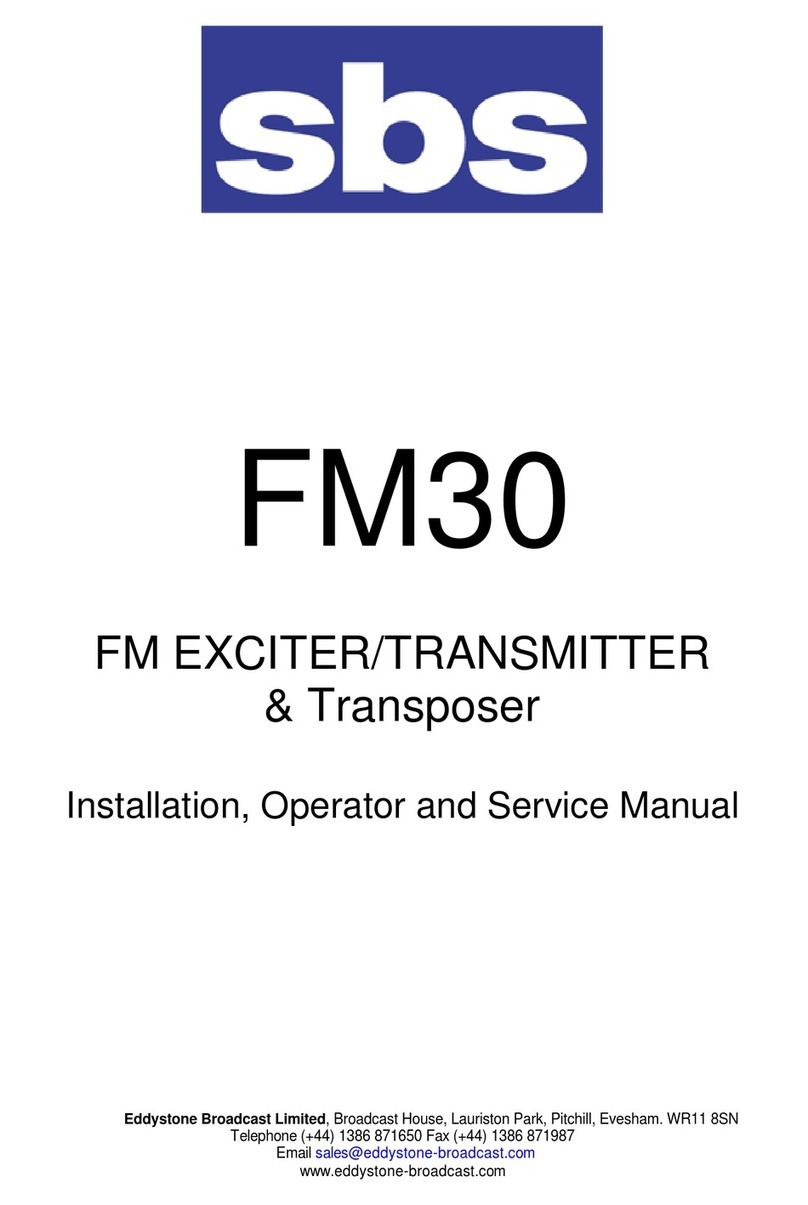Page 10
7.2 OUTPUT POWER/LEVEL
Asmall trimmer toolorprecisionscrewdriverwillbe requiredtoadjusttheoutputpower.
The control is located on the rear panel.
The output power should be set using an accurate power meter connected to the RF
output which in turn should be connected to an adequately rated dummy load. If a
dummy load is not available then the FM10 could be set upconnected to the aerial. In
this case the Output Power control should be set to minimum (anti-clockwise) before
powering up the FM10.
7.3 FORWARD POWER ALARM
This setting defines the point at which a forward power fault is indicated at the
Control/Monitor socket (for telemetry and/or operation of an automatic change over
system). This is not adjustable on the FM10. It is pre-set to about 3W.
7.4 MODULATOR INPUT LEVEL
The setting of the modulator AUDIO LEVEL control (on the PLL7 PCB) will depend on
the version supplied. For the FM10/M please read the section below headed DLM3
PCB and for the FM10/S please read the section headed LimX PCB. An accurate
deviation meter will be required, which should be connected to the rear panel RF
monitor socket (or output on the cable distribution version).
Mono/MPX version (no limiter or stereo encoder)
The FM10 is normally supplied with the modulator input level set so that an input level
of +8dBu over the range 5Hz to 100kHz (without pre-emphasis) gives a deviation of
75kHz. If a different level is required then it will be necessary to reset the AUDIO
LEVEL control on the PLL7 board. Apply a 400Hz sine wave at the level required for
maximum deviation (normally 75kHz). Adjust the AUDIO LEVEL control to give the
required deviation.
Full details of the alignment procedure are available on request from Eddystone
Broadcast.




























